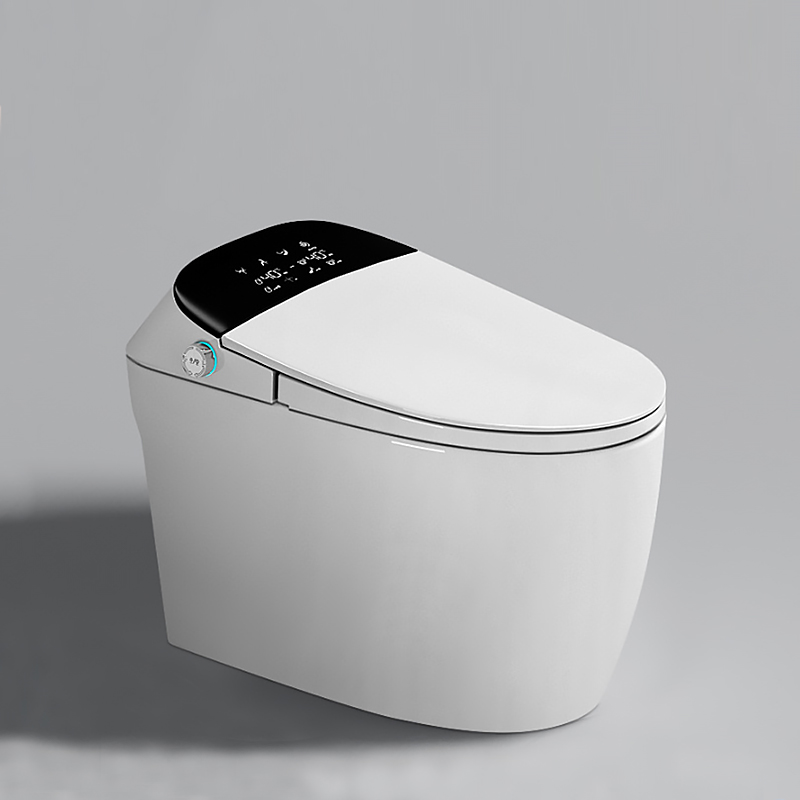Tankless Toilets: Eco-Friendly and Convenient
In today's world, where sustainability and modern convenience are key factors in home design, tankless toilets have emerged as a game-changer in the bathroom fixture market.
Unlike traditional toilets, tankless models offer a range of benefits that make them an attractive option for environmentally conscious homeowners.
Not only do they conserve water, but they also enhance the aesthetic appeal of bathrooms with their sleek, space-saving design.

In this article, we'll explore how tankless toilets work, their eco-friendly benefits, and why they might be the perfect addition to your home.
What Are Tankless Toilets?
Tankless toilets are a type of plumbing fixture that operates without the traditional water tank commonly seen in standard toilets.
Instead of relying on gravity-fed water from a tank, tankless toilets use a direct water supply line that is typically pressurized or powered by an electric pump.
This allows for immediate and powerful flushing, without the need for a bulky tank.
Tankless toilets are often associated with modern bathroom designs due to their minimalist appearance and efficient functionality.
They are also the foundation for many tankless smart toilet models, integrating advanced features like bidet functions, heated seats, and automatic flushing.
Eco-Friendly Benefits of Tankless Toilets
1. Water Efficiency
One of the most significant advantages of tankless toilets is their water-saving capabilities. Traditional toilets use a significant amount of water per flush, typically between 1.6 and 3.5 gallons.
In contrast, tankless toilets are designed to use as little water as necessary for each flush, often as low as 0.8 to 1.0 gallons per flush.
This reduction in water usage not only lowers your water bill but also contributes to water conservation efforts.
2. Reduced Environmental Impact
Tankless toilets contribute to reducing the overall environmental footprint of a household.
By using less water and often incorporating energy-efficient technologies, these toilets help decrease the demand on local water resources and reduce the energy needed for water treatment and pumping.
For those looking to make their homes more sustainable, tankless toilets are an excellent choice.
3. Minimalist Design
Tankless toilets are also celebrated for their sleek, minimalist design. With no need for a bulky tank, these toilets can be more easily integrated into compact bathroom spaces, providing a clean and modern look.
This design also allows for easier cleaning and maintenance, as there are fewer crevices and surfaces where dirt and grime can accumulate.
Convenience of Tankless Toilets
1. Space-Saving Design
The absence of a tank means that tankless toilets take up less space than traditional models. This is particularly advantageous in smaller bathrooms where every inch counts.
By freeing up wall and floor space, tankless toilets can make a small bathroom feel more open and less cluttered.
This space-saving design is especially beneficial in urban settings where bathroom space is often limited.
2. Powerful Flushing Mechanism
Tankless toilets often feature advanced flushing mechanisms that provide a powerful flush without the need for a large volume of water. This is typically achieved through a combination of water pressure and sometimes an electric pump.
The result is an efficient, thorough flush that reduces the need for double flushing, further saving water.
3. Advanced Technology Integration
Many tankless toilets are equipped with smart technology that enhances their functionality and convenience. Features like automatic flushing, self-cleaning nozzles, heated seats, and even deodorizers are commonly found in tankless smart toilets.
These features not only improve the user experience but also contribute to maintaining a clean and hygienic bathroom environment with minimal effort.
4. Ease of Installation
Despite their advanced features, tankless toilets can be easier to install than traditional toilets in certain situations.
Because they do not require a tank, there is no need to consider the space needed for it, and the installation process can be more flexible.
However, because tankless toilets often require a direct and powerful water supply, it’s important to ensure that your plumbing is compatible.
In some cases, an upgrade to the plumbing system might be necessary, but the long-term benefits often outweigh the initial effort.
Considerations When Choosing a Tankless Toilet
1. Water Supply Requirements
Tankless toilets require a continuous, pressurized water supply to function properly. It's essential to ensure that your home's plumbing can accommodate this demand.
In some cases, especially in older homes, the water pressure may need to be increased, or additional plumbing modifications might be required.
2. Electrical Needs
Many tankless toilets, particularly those with smart features, require an electrical connection to power components like pumps, sensors, and heated seats.
Before installing a tankless toilet, check that your bathroom has an accessible electrical outlet, preferably one that is GFCI (Ground Fault Circuit Interrupter) protected to ensure safety in a wet environment.
3. Cost
While tankless toilets offer numerous benefits, they can be more expensive than traditional toilets. The cost includes not only the toilet itself but also potential upgrades to your plumbing and electrical systems.
However, the long-term savings on water bills and the added convenience and hygiene features can make this investment worthwhile.
4. Working with a Supplier
Choosing the right tankless toilet involves considering both your needs and the quality of the product.
Working with a reliable bathroom wholesale supplier can ensure that you get a high-quality tankless toilet that fits your bathroom's requirements.
A trusted supplier like Jabra Sanitary offers a wide range of tankless toilets and can provide expert advice on the best options for your home.
Conclusion
Tankless toilets represent the future of bathroom design, combining eco-friendly features with modern convenience.
Their water-saving capabilities, powerful flushing mechanisms, and sleek design make them an excellent choice for any home, particularly for those looking to reduce their environmental impact and enhance bathroom aesthetics.
While the initial investment may be higher, the long-term benefits of a tankless toilet, especially those with smart features, make it a worthwhile addition to any bathroom.
Post Your Ad Here
Comments